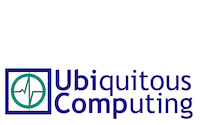Datensätze
The following data sets have been recorded during our research and are being made available for download*:

FCS 2022
IBSync: Intra-body synchronization and implicit contextualization of wearable devices using artificial ECG landmarks. Florian Wolling and Kristof Van Laerhoven. Frontiers in Computer Science 2022.Recorded measurements of the three conducted experiments.

EMBC 2021
Optimal Preprocessing of Raw Signals from Reflective Mode Photoplethysmography in Wearable Devices. Florian Wolling, Sudam Maduranga Wasala, and Kristof Van Laerhoven. EMBC 2021, Virtual Event, IEEE, 2021.Supplementary annotations for a large dataset of raw, reflective mode photoplethysmography.

FCS 2021
Breathing In-Depth: A Parametrization Study on RGB-D Respiration Extraction Methods. Jochen Kempfle and Kristof Van Laerhoven. Frontiers 2021.A benchmark dataset with depth data from people performing activities, to estimate respiration.

DATA 2020
The Quest for Raw Signals: A Quality Review of Publicly Available Photoplethysmography Datasets. Florian Wolling and Kristof Van Laerhoven. DATA 2020, Virtual Event, Japan, ACM, 2020.The raw PPG reference data and the developed analytical tool for automatic quality reviews.

SAR 2020
Towards Breathing as a Sensing Modality in Depth-Based Activity Recognition. Jochen Kempfle and Kristof Van Laerhoven. Sensors 2020.A benchmark dataset with depth data from people performing activities, to estimate respiration.

Sensors 2019
Deep PPG: Large-scale Heart Rate Estimation with Convolutional Neural Networks Authors: Attila Reiss, Ina Indlekofer, Philip Schmidt, and Kristof Van Laerhoven. Sensors 2019.A large dataset with a wide range of physical activities, performed under close to real-life conditions.

ICMI 2018
Introducing WESAD, a Multimodal Dataset for Wearable Stress and Affect Detection. Philip Schmidt, Attila Reiss, Robert Duerichen, Claus Marberger, and Kristof Van Laerhoven. ICMI’18, Boulder, Colorado, ACM, 2018.Physiological and motion data, recorded from both a wrist- and a chest-worn device, of 15 subjects during a lab study.

INF 2018
Real-Time and Embedded Detection of Hand Gestures with an IMU-Based Glove. Chaithanya Kumar Mummadi, Frederic Philips Peter Leo, Keshav Deep Verma, Shivaji Kasireddy, Philipp M. Scholl, Jochen Kempfle, and Kristof Van Laerhoven. ICMI’18, Boulder, n Informatics, 5(2), 2018.Gesture data wit 22 classes, recorded from a a set of glove-embedded IMUs, of 57 subjects during a lab study.

UbiComp 2015
Wearables in the Wetlab: a Laboratory System for Capturing and Guiding Experiments. Philipp M. Scholl, Matthias Wille and Kristof Van Laerhoven, UbiComp'15, Osaka, Japan, ACM, 2015.Original video recordings, activities encoded as subtitles and acceleration data of the wrist for 22 participants.

ICHI 2014
Towards a Benchmark for Wearable Sleep Analysis with Inertial Wrist-worn Sensing Units, Marko Borazio, Eugen Berlin, Nagihan Kücükyildiz, Philipp M. Scholl and Kristof Van Laerhoven. ICHI 2014. IEEE Press.Recorded PSG and inertial data from 42 sleep lab patients and scripts to visualize all data.

AH 2013
Time Use Surveys: Improving Activity Recognition without Sensor Data, Marko Borazio and Kristof Van Laerhoven, ACM AH 2013.Experiment scripts for using time surveys and activity episodes from 5160 households / 13798 individuals.

UbiComp 2012
Detecting Leisure Activities with Dense Motif Discovery, Eugen Berlin and Kristof Van Laerhoven, Ubicomp 2012. ACM Press.Raw sensor data from 6 participants wearing our wrist-worn prototype for a full week.

INSS 2012
Trainspotting: Combining Fast Features to Enable Detection on Resource-constrained Sensing Devices, Eugen Berlin and Kristof Van Laerhoven, INSS 2012, IEEE Press.Vibration footprint data from rail-based wireless sensing nodes, for 250 trains of different types.
[More to be added at a later date]
*Please note that although all our data sets are being published here without any restrictions (they are free to download, free to use and to publish about without special requirements from our side) by default, some of them might be subject to stricter control because of the nature of the data or project they were funded by. See the individual data set's descriptions for more information.
